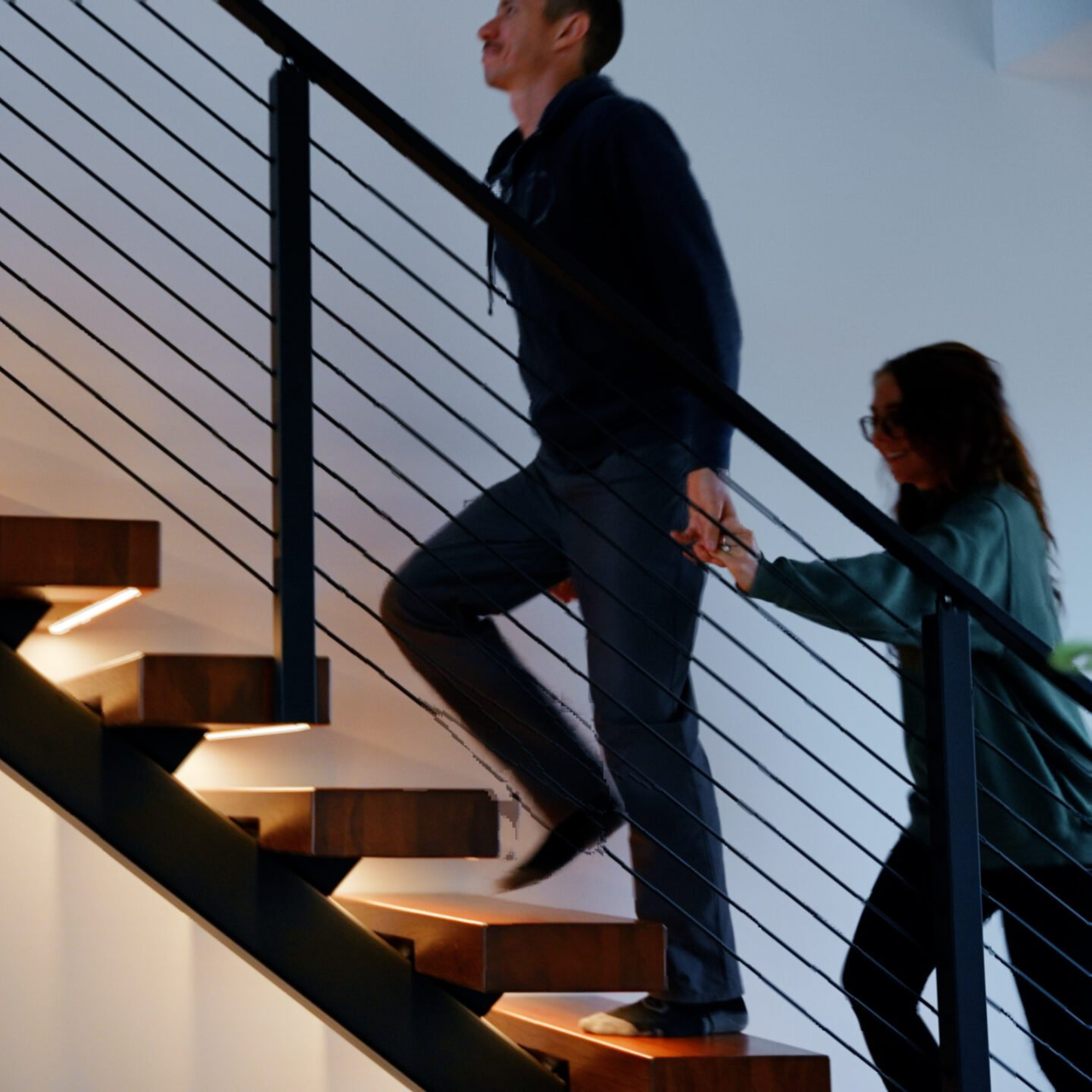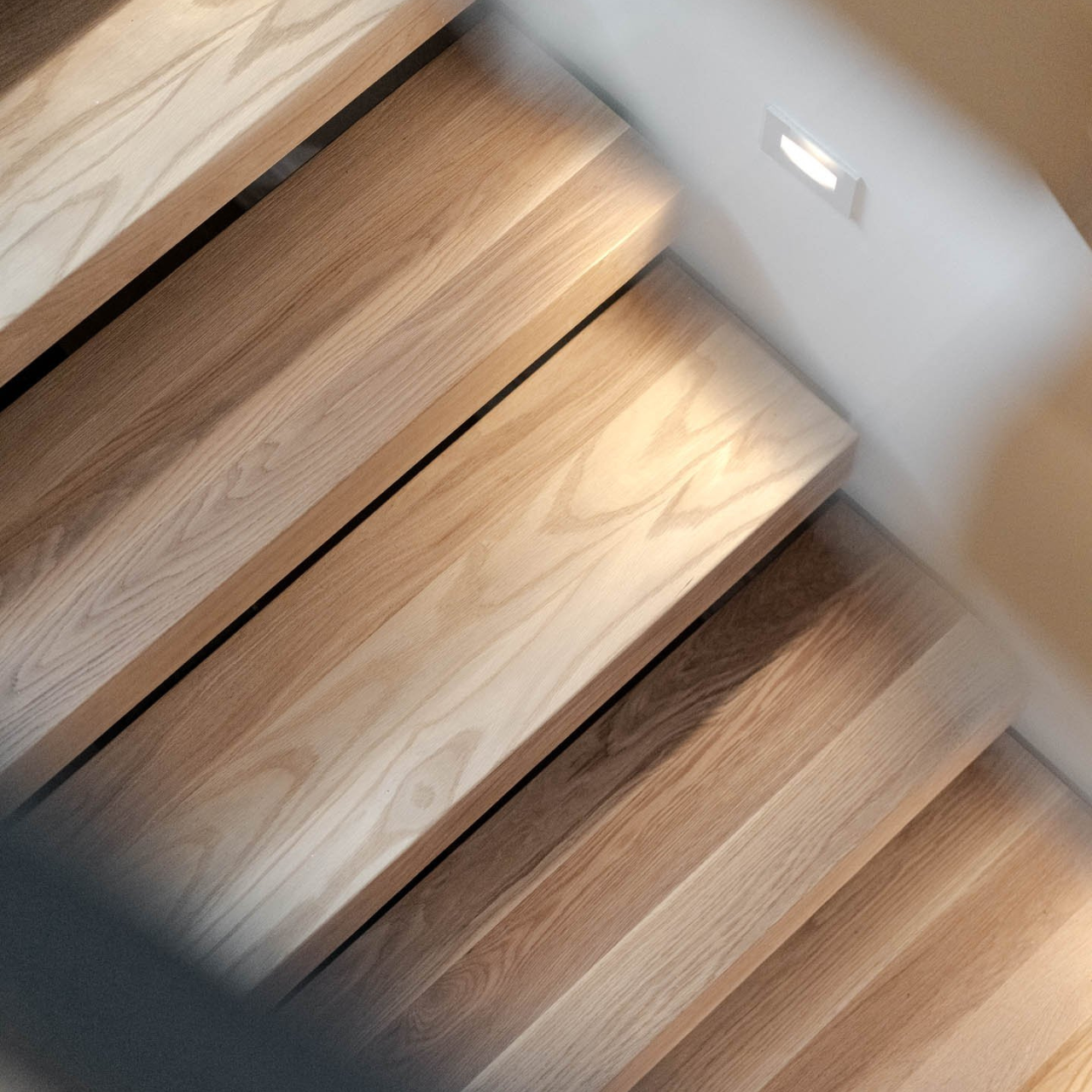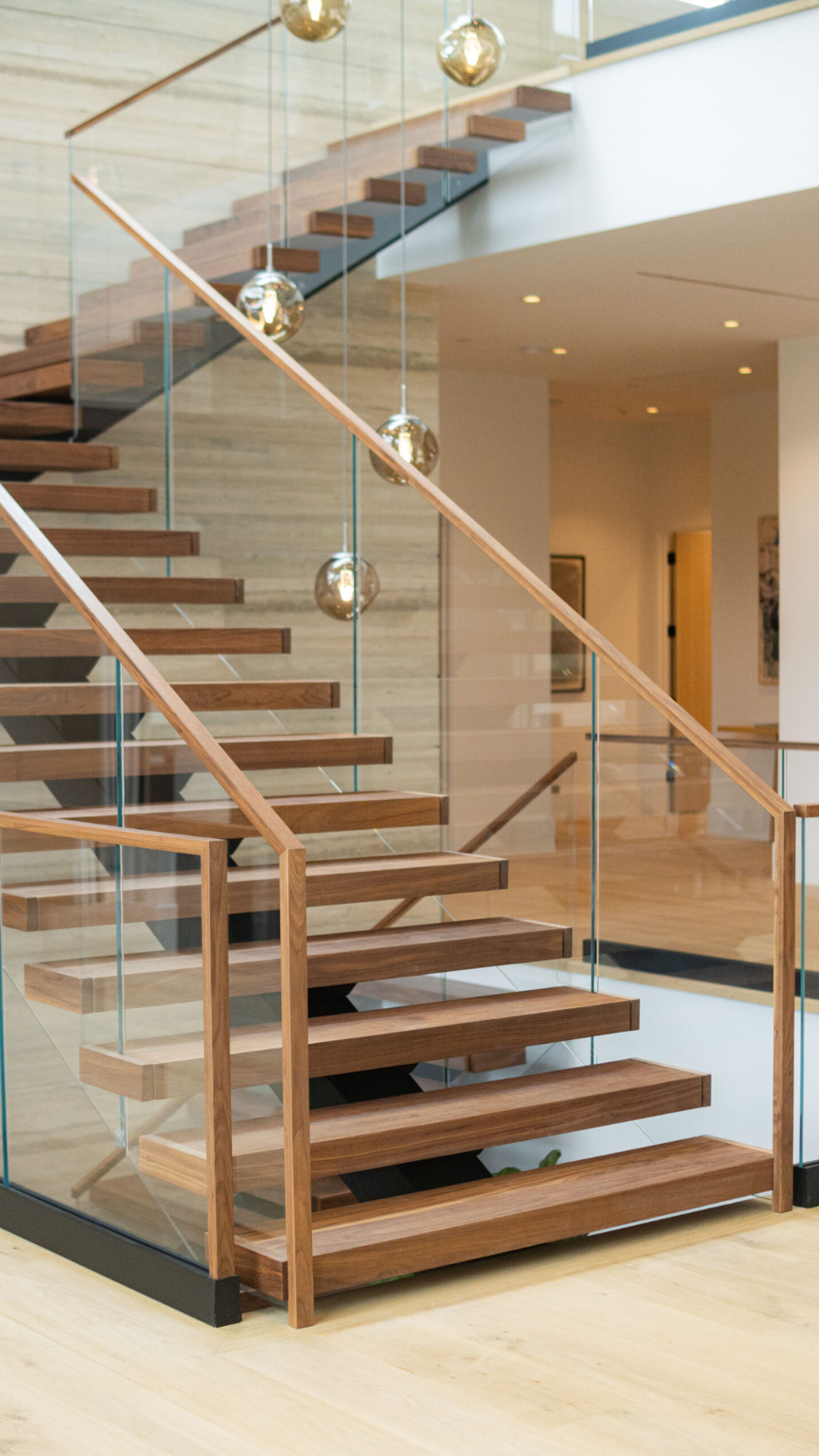Floating stairs offer a sleek and modern design that can elevate any home or commercial space. While their minimalist appearance may initially raise safety concerns, they are just as secure as traditional staircases, and often exceed building code requirements when designed and built correctly.
What Makes a Staircase Dangerous?
To evaluate the safety of any staircase, it’s essential to address three critical factors:
Floating stairs, when designed and installed properly, can meet or exceed safety standards in all three areas. Let’s take a closer look at each of these factors.
Weight Capacity of Floating Stairs
The strength of a floating staircase is a crucial safety consideration. According to the International Building Code (IBC), stair treads must support at least 300 lbs of concentrated weight.
Viewrail’s treads far surpass this standard, as third-party testing by ICC NTA revealed:
- It takes over 2,000 lbs to pull a single tread off its bracket.
- It requires over 3,000 lbs to cause actual damage to the treads.
Additionally, Viewrail uses grade 8 bolts, one of the strongest available in the U.S., combined with thread locking adhesive to prevent loosening, corrosion, and leakage over time. The use of flow drilling technology ensures secure, distortion-free connections, resulting in a more robust and visually seamless product.


Fall-Through Concerns for Open-Riser Stairs
One of the most common worries with floating stairs is the open-riser design, which removes the vertical structure between treads. To address this, Viewrail complies with the IRC’s 4-inch sphere rule, ensuring that no gap in the staircase exceeds 4 inches. This rule is designed to prevent small children from falling through the stairs.
For families seeking additional security, Viewrail offers options such as:
- Closed-Riser Designs: The FLIGHT Stack system combines a modern aesthetic with closed risers for added safety.
- Glass Railings: Installing glass railings minimizes fall risks without compromising the staircase’s minimalist look.
- Wider Treads: Choosing wider treads creates a larger walking surface, improving stability.
Slip Resistance on Floating Stairs
While the IRC does not mandate specific slip-resistance standards, Viewrail provides several options to enhance traction:
- Wire-Brushed Treads: All Viewrail floating stair systems come standard with wire-brushed treads, offering a natural, textured surface for improved grip.
- Grip Strips: These sleek stainless-steel strips adhere to treads, creating friction without detracting from the modern design. Grip strips are especially beneficial in commercial environments or high-traffic areas.
- LED Integration: Optional LED-compatible treads and handrails improve visibility, making staircases safer, particularly in dimly lit areas.

Advanced Engineering for Safety
Viewrail’s floating stairs are designed with both aesthetics and safety in mind. These innovations ensure that every component of a Viewrail staircase is secure, durable, and easy to install. Key engineering features include:
Bolted Stringers
Unlike traditional welding, Viewrail employs flow drilling to create threaded holes for bolts, ensuring distortion free connections.
Header and Footer Plates
Each plate is secured with six high-grade bolts, enabling the system to support more than five times the recommended weight.
Certifications and Code Compliance
Safety begins with meeting or exceeding industry standards. Viewrail’s FLIGHT Mono system is the first floating stair system in the United States to receive certification from the International Code Council (ICC). It’s one of the many ways that Viewrail shows its commitment to safety and compliance.
It’s important to note that building codes can vary by state. While the IRC is widely used across 49 states, homeowners should consult local codes to ensure compliance. Viewrail provides guidance to help customers navigate these requirements.

Making Floating Stairs Child-Proof
Floating stairs can be a safe and stylish option for families with young children, especially when equipped with the right safety features. While concerns about open risers and minimalistic designs are understandable, there are several ways to enhance security and make these staircases family-friendly:
1. Install Glass Railings for Maximum Safety
Tempered glass railings are a sleek and highly secure solution that completely eliminate gaps, preventing children from slipping through, maintain visibility, and resist impact and shattering.
2. Choose Wider Treads for Stability
Wider treads offer a more secure foothold, reducing the risk of missteps or falls. Standard stair treads are often 10 inches deep, but opting for wider treads (12 inches or more) provides extra room for stability.
3. Enhance Traction with Grip Strips
Available for any FLIGHT treads measuring 36 inches or greater, grip strips are a practical and elegant way to reduce slip risks for children and guests.
4. Consider a Closed-Riser Alternative
For parents who prefer extra security, Viewrail’s FLIGHT Stack is an excellent alternative. This system features a closed-riser design, preventing children from attempting to climb between steps.
5. Use LED Lighting for Visibility
Integrated LED lighting in treads or handrails can improve visibility in low-light conditions by highlighting each stair’s edge, making it easier for children (and adults) to step safely.
Are Floating Stairs Safe?
Yes, floating stairs are safe when designed and installed to meet or exceed building codes. Viewrail’s FLIGHT systems combine cutting-edge engineering with industry-leading safety features to create floating staircases that are as secure as they are stylish. By exceeding weight standards, adhering to the IRC’s safety regulations, and offering customizable safety options, Viewrail ensures peace of mind for families and businesses alike.
When properly designed and installed, floating stairs are no more dangerous than traditional staircases. With Viewrail, you can have both the minimalist aesthetic you want and the safety you need.